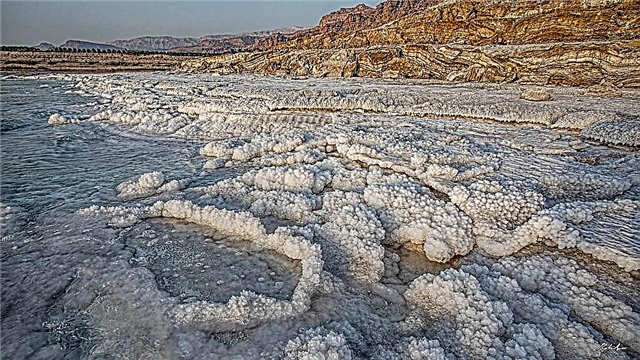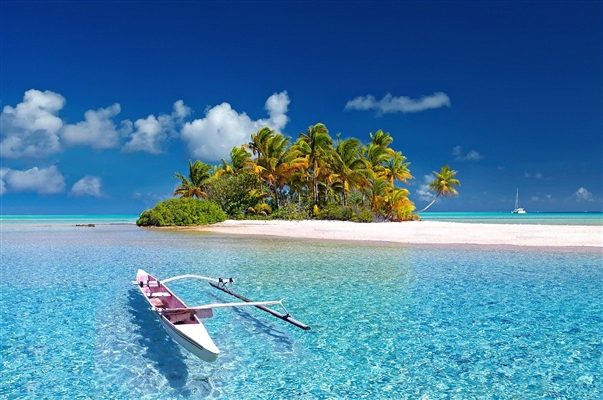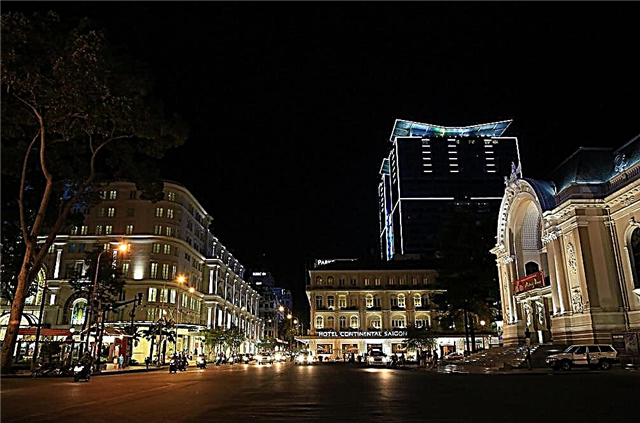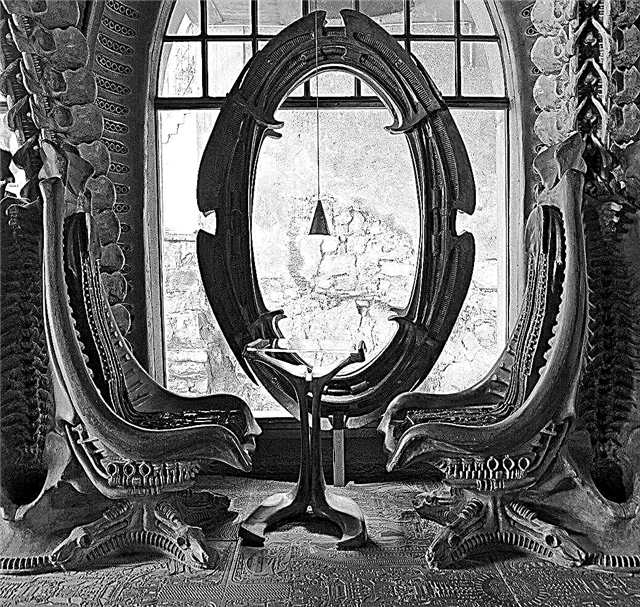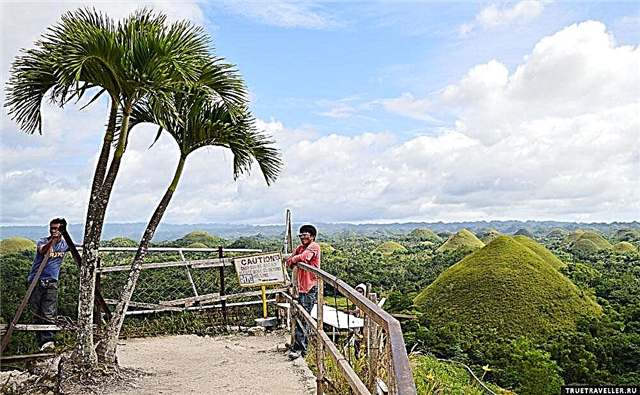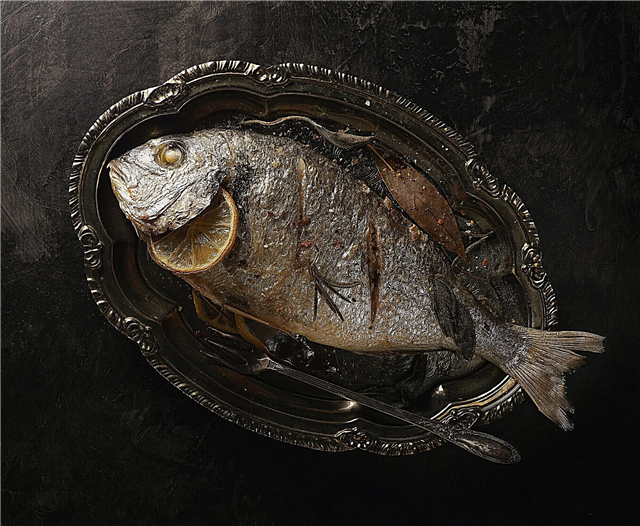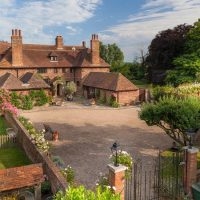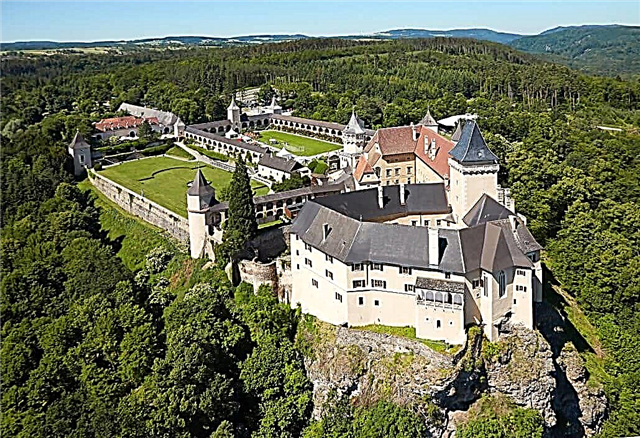Majestic Austria has a rich history and an amazing cultural heritage. Countless medieval castles take us to the atmosphere of knightly tournaments and duels, luxurious balls. Delightful alpine landscapes add a special flavor to these places. Almost every castle has its own historical legend. Mysterious walls keep the memory of many historical events.
Many rulers of the Roman Empire built their fortresses in the Austrian lands, later the houses of the Habsburg family were located here. Most of Austrian castles are now open to tourists. Cultural events are also often held, such as historically recreated knightly tournaments and medieval balls.
The most beautiful castles in Austria
Medieval fortresses and royal palaces, list, photos with names and descriptions!
Hohensalzburg
This ancient Romanesque castle was built over nine centuries ago in Salzburg and was originally small in size, but over time it has developed into a powerful fortress with towers and bastions. In the 16th century, the world's first Reiszug funicular was created in the castle, which delivered food and goods. The ancient castle has been perfectly preserved to our times, and an amazing panorama of the city opens from its towers.

Eggenberg
The unique palace, built in 1625 by Prince Eggenberg, is a World Heritage Site. The architecture of the castle reflects Buddhist traditions. 365 windows in the palace correspond to days of the year, 52 rooms - to weeks, 24 service rooms - to the number of hours in a day, 12 gates in the park symbolize months, 4 towers in the castle indicate the four elements and the cardinal points. The castle itself has a simplicity of architecture, uncharacteristic of the Renaissance.

Kreuzenstein
Located on the banks of the Danube near Vienna, the fairytale castle of Kreuzenstein has one of the largest collections of edged weapons. The original appearance of the castle was significantly different from the current one. Built in the 12th century and owned by the Habsburgs, Kreuzenstein was almost completely destroyed in the 17th century. The reconstruction of the castle was taken up by Count Wilczek at the end of the 19th century, and in 1906 Kreuzenstein appeared in its splendor. Now the Gothic castle is open to tourists.

Hochosterwitz
The majestic ancient castle rises on a 160-meter steep cliff. In the 9th century, the ownership of the castle belonged to the then Slovenian principality, now it is the Austrian territory - Carinthia. Later, in the 15th century, Hochosterwitz became the property of Emperor Frederick III. The castle has two large courtyards - external and internal, as well as a residential palace and a family chapel. The castle is still the property of one well-known Austrian family, so tourists have limited access to some parts of the castle.

Ambras
The magnificent palace complex is located on a hill by the Inn River. Outwardly reminiscent of an administrative building, Ambras has a huge collection of various exhibits, as well as a wonderful interior. Since 1919, the Ambras Castle Museum has become a state one. The Spanish Hall, the courtyard and apartments of the Upper Castle were restored, the Kunstkamera, a portrait gallery and a weapons museum were opened.

Schlosberg
Built in the early 12th century in the city of Graz, the castle later became the residence of the emperors. From the 15th century until 1809, Schlosberg was never captured, despite the attempts of the Napoleonic army to invade the fortress. On the territory of the famous castle are the Clock Tower, a military museum with a huge arsenal of weapons and an open-air theater.

Hohenwerfen
The beautiful and inaccessible castle is located in the town of Werfen on the top of a high hill surrounded by forests and mountains. You can get to the medieval castle, founded in the 11th century, on foot or by car. The interior of the castle has hardly survived. However, there are two museums in the castle. In addition to the usual museum of weapons and armor, there is a unique falconry museum; there was also a dungeon in Hohenwerfen.

Riegersburg
Not far from Graz is the old fortress Riegersburg, which well defended Styria from Turkish and Hungarian troops. The construction of the castle began in the 12th century, but the fortress received significant changes in the construction in the 17th century. Today, the castle hosts various exhibitions about the history of the fortress and one of its owners from the Liechtenstein dynasty. On the territory of the castle there is a museum of witches. In the old days, witch trials were held here.

Graz castle
The first small building of the castle was built in the XIV century and has not survived. In the 15th century, Graz Castle began to acquire the architectural appearance that we are now used to seeing. For a long time, the castle became the seat of the archdukes and, under the influence of the era, was rebuilt in the Renaissance style. At the present time, the city administration is located in the castle.

Rosenburg
The old Romanesque fortress Rosenburg on the Kamp River, which owes its restoration to a Spanish family who bought the castle in the 15th century, is distinguished by its graceful and noble appearance. Around the castle, beautiful gardens with a hundred-meter wall of rose bushes are laid out, special fragrant plants are grown in the Herb Garden, there is also a Lily Pond and a Falconry Museum. Rosenburg, often referred to as the Castle of the Roses, has a well-preserved knightly playground.

Schattenburg
The castle was built at the beginning of the 13th century in Feldkirch near Liechtenstein. Now under the castle is a car tunnel. The former residence of the Counts of Montfort has been perfectly preserved to this day and conveys the way of life of that time. The castle museum has an extensive collection of exhibits. Antique clothing, armor and weapons, church art and other antiquities are exhibited in eighteen halls of the museum.

Hartheim
The history of the castle dates back to the XII century, its owners were the Hartheim family. In the 16th century, the castle was rebuilt in the architectural style of the Renaissance. At the end of the 19th century, Hartheim became part of the Catholic Church, which founded here a hospital for the disabled and the mentally ill. During World War II, the Nazis set up a euthanasia center in the castle. After the restoration of the castle in 2002, Hartheim became open to tourists.

Landskron
The beautiful old castle is now in disrepair. The Ossiach Fortress was built at the beginning of the 11th century and belonged to the Count of Ozzi. Over the centuries, the castle has changed its owners and names. The name Landskron is mentioned in the XIV century. The Habsburgs were one of the owners. In the 16th century, the castle was donated to the Order of St. George, but as a result of a lightning strike, almost all of the castle burned down. The Kevenhullers rebuilt Landskron. After 1812, the castle was no longer restored.

Artstetten
The graceful castle on the banks of the Danube, built in the 13th century, has a sad history. In the 19th century, the castle became the property of the imperial house. Under its owner, Archduke Franz Ferdinand, the luxurious palace began to look the way it is used to see it today. Archduke d'Este entered into an unequal marriage with a Czech girl Sophia. In 1914 they were killed, and later their sons were sent to the camps by the Nazis. Germany confiscated the castle. In 1949 Artstetten returned to Austrian possession.

Linz castle
The history of the castle goes back many centuries, starting from the 8th century. Today the castle has been partially preserved. At the end of the 15th century, it belonged to Emperor Frederick III. Having changed many owners, in the 19th century, the castle first became a hospital, then a prison, and then turned into a soldier's barracks. Now the castle houses a museum that preserves the history of Upper Austria and the city of Linz.

Kufstein
The Romanesque fortress was built in the 13th century on the border between Austria and Bavaria.In the 14th century, disputes arose between the Austrians and Bavarians over the ownership of Kufstein. Disagreements turned into hostilities. For many centuries, the fortress passed into the possession of the Bavarian lands, then the Austrian ones. Now the Austrian castle houses a history museum.

Herberstein
The first mention of the castle dates back to the 12th century. The castle acquired a splendid appearance under the owners of the dynasty of the Counts of Herberstein. The inside of the castle has the same splendor as the outside. The castle is surrounded by many beautiful gardens. On the territory of the castle there is a working zoo with many species of animals, a magnificent park and the Pavilion of Roses, as well as the Geroncoli Museum.

Schlining
The medieval castle was built in the 13th century. In different historical periods, it belonged to the Austrians, then the Hungarians. At the end of the 20th century, the fortress began to belong to the Austrian Burgerland. The castle has well-preserved medieval wall frescoes. Currently, there is a Peace Museum in the fortress, and stylized knightly tournaments are organized on the territory of Schlaining.

Anif
An elegant and beautiful castle, standing right on the lake, was built in the 16th century. The castle is surrounded by a vast English park, created at the end of the 18th century. The castle acquired its neo-Gothic style in the 19th century under the new owner, Count Alois von Stepperge. The interior of the castle was redesigned in the English style. The castle is now privately owned. However, the park near the castle is open to tourists.

Falkenstein
The ancient fortress was built around the 11th century and consisted of the Upper and Lower castles. The Lower Castle has been well preserved to this day, and the Upper Castle was badly damaged during the construction of the tunnel. The fortress stands out for its high and powerful tower, erected on a rock. Today Falkenstein is a private property in Carinthia.

Schönbühel
The ancient castle, called the Wachau guardian, has dominated the Danube for centuries. For the first time the name of the castle is found in the XII century. In the 17th century, a monastery was built next to the castle. Surrounded by dense forests, the majestic castle is now inaccessible to tourists, as it is privately owned.

Lokenhouse
The ancient castle in the lands of Burgerland is located in a unique natural park. The castle retains the atmosphere of the Middle Ages. In Lokenhaus, the Knights 'Hall and the Castle Chapel with 13th century frescoes have been restored, the Knights' Museum has been created, and there is even a torture chamber in the basement. The castle is in excellent condition, many buildings have survived. In Lokenhouse you can see archery competitions, knightly tournaments.

Schallaburg
The Renaissance castle was built in the 16th century. The luxurious castle is a gem of Lower Austria. Shalaburg is distinguished by its rich interior decoration. During World War II, it was occupied by Soviet soldiers. In 1955, the castle returned to the ownership of the Austrian lands and after the restoration it became a museum.

Liechtenstein
The 12th century Romanesque castle belonging to the Liechtenstein dynasty is distinguished by its unusual architectural appearance. A narrow fortress with jagged turrets and balconies seems to grow on the outskirts of the Vienna woods in Lower Austria. Over the centuries, the castle has been repeatedly destroyed and rebuilt. The castle is now owned by the Liechtenstein family.

Matzen
The ancient Tyrolean fortress in ancient times served as a resting place in long military campaigns. In the XII century, a chapel was built on the territory of the castle. In the 15th century, the castle was captured by Bavarian troops. During the ownership of the Fugger castle, Matzen changed his Gothic style. Now the castle serves as a six-story comfortable hotel and is a private property.

Oberkapfenberg
The ancient castle, located in Styria, in the city of Kapfenberg, in the XIII century marked the beginning of the Stubenberg crusades to the East. Today, the castle houses an armory and a torture chamber. Recently, an alchemical laboratory was discovered by archaeologists. Now the castle houses a museum and hosts various cultural events.

Prilau
The magnificent castle, built in the 15th century, is located in picturesque surroundings and is very popular among tourists. Today, the fairytale castle is a four-star hotel. Over time, Prilau turned from a small hunting castle into a luxurious fortress. In the 20th century, after significant restoration, the Porsche family established a high-class hotel here.

Trazberg
The fortress was built on the Inn River at the end of the 13th century. During the Renaissance under Maximilian I, significant changes took place in the castle, and the medieval fortress acquired Gothic features. The castle itself has significantly increased, changes have also affected the interior. The castle is now owned by the family of Count Hess-Enzenberg. However, the castle is a public museum.

Forchtenstein
The fortress, built in the XIV century, is located near Vienna, on the border with Hungary, belongs to the lands of Burgenland. In the Middle Ages, the castle served as a defense against Turkish raids. In the 17th century, the fortress expanded significantly. In the 19th century, the castle acquired the status of a museum, which possesses a large collection of antiquities, as well as medieval weapons and works of art.

Aggstein
This 12th century medieval castle dominates the Danube in Lower Austria. The fortress has been poorly preserved to our times. However, many tourists want to find themselves on the ancient ruins and admire the beautiful landscapes. Many uprisings took place in the castle, there were long sieges, and some of the owners of the castle went down in history with their greed and cruelty.


